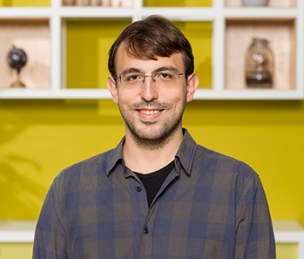Displaying 1 - 2 of 2
-
Maskalenka, K., Alagöz, G., Krueger, F., Wright, J., Rostovskaya, M., Nakhuda, A., Bendall, A., Krueger, C., Walker, S., Scally, A., & Rugg-Gunn, P. J. (2023). NANOGP1, a tandem duplicate of NANOG, exhibits partial functional conservation in human naïve pluripotent stem cells. Development, 150(2): dev201155. doi:10.1242/dev.201155.
Abstract
Gene duplication events can drive evolution by providing genetic material for new gene functions, and they create opportunities for diverse developmental strategies to emerge between species. To study the contribution of duplicated genes to human early development, we examined the evolution and function of NANOGP1, a tandem duplicate of the transcription factor NANOG. We found that NANOGP1 and NANOG have overlapping but distinct expression profiles, with high NANOGP1 expression restricted to early epiblast cells and naïve-state pluripotent stem cells. Sequence analysis and epitope-tagging revealed that NANOGP1 is protein coding with an intact homeobox domain. The duplication that created NANOGP1 occurred earlier in primate evolution than previously thought and has been retained only in great apes, whereas Old World monkeys have disabled the gene in different ways, including homeodomain point mutations. NANOGP1 is a strong inducer of naïve pluripotency; however, unlike NANOG, it is not required to maintain the undifferentiated status of human naïve pluripotent cells. By retaining expression, sequence and partial functional conservation with its ancestral copy, NANOGP1 exemplifies how gene duplication and subfunctionalisation can contribute to transcription factor activity in human pluripotency and development. -
Glock, P., Raum, B., Heermann, T., Kretschmer, S., Schweizer, J., Mücksch, J., Alagöz, G., & Schwille, P. (2019). Stationary patterns in a two-protein reaction-diffusion system. ACS Synthetic Biology, 8(1), 148-157. doi:10.1021/acssynbio.8b00415.
Abstract
Patterns formed by reaction-diffusion mechanisms are crucial for the development or sustenance of most organisms in nature. Patterns include dynamic waves, but are more often found as static distributions, such as animal skin patterns. Yet, a simplistic biological model system to reproduce and quantitatively investigate static reaction-diffusion patterns has been missing so far. Here, we demonstrate that the Escherichia coli MM system, known for its oscillatory behavior between the cell poles, is under certain conditions capable of transitioning to quasi-stationary protein distributions on membranes closely resembling Turing patterns. We systematically titrated both proteins, MinD and MinE, and found that removing all purification tags and linkers from the N-terminus of MinE was critical for static patterns to occur. At small bulk heights, dynamic patterns dominate, such as in rod-shaped microcompartments. We see implications of this work for studying pattern formation in general, but also for creating artificial gradients as downstream cues in synthetic biology applications.Additional information
https://pubs.acs.org/doi/abs/10.1021/acssynbio.8b00415#notes-1

Share this page